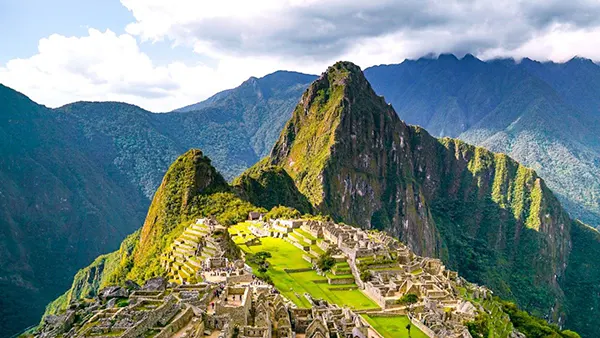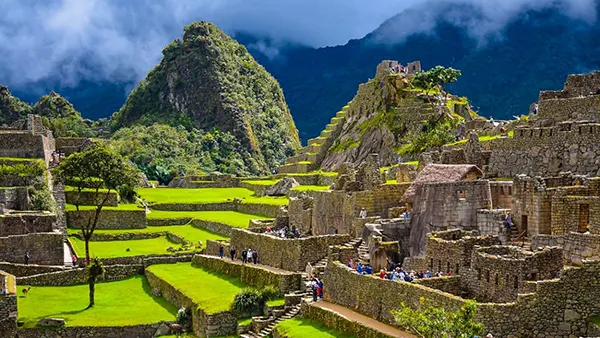
Machu Picchu: The Mysterious Inca City Above the Clouds
High in the Andes Mountains of Peru lies one of the most iconic and enigmatic archaeological sites in the world – Machu Picchu. This ancient city, often shrouded in mist, continues to captivate historians, travellers, and archaeologists alike. Built during the height of the Inca Empire, Machu Picchu is a testament to the ingenuity and spiritual depth of this great civilisation.
The Origins and Purpose of Machu Picchu
Machu Picchu is believed to have been constructed in the 15th century during the reign of Inca emperor Pachacuti. Located approximately 2,430 metres above sea level, its strategic placement suggests both defensive and spiritual intentions. Despite centuries of research, the precise purpose of the city remains a matter of scholarly debate.
Some researchers argue that Machu Picchu served as a royal estate or religious retreat, possibly dedicated to sun worship. Others believe it was a key administrative centre within the empire. What is known for certain is that the site demonstrates impressive knowledge of architecture, astronomy, and water management.
Its layout includes agricultural terraces, ceremonial areas, and residential buildings, all constructed using a sophisticated technique called ashlar masonry. This method involved precisely cutting stones to fit together without mortar, a technique so effective that many structures have withstood centuries of weather and seismic activity.
Spiritual and Cultural Significance
Machu Picchu is often described as a sacred place, and evidence suggests the Incas held strong cosmological beliefs. The alignment of its buildings and windows with astronomical events – such as solstices – supports the idea of its religious importance. The Temple of the Sun, for example, was designed to capture the rays of the sun during specific times of the year.
Religious ceremonies and pilgrimages were likely held here, reinforcing the city’s role in the spiritual life of the empire. Its remote location, accessible only via a narrow mountain ridge, may have contributed to its aura of mysticism, offering a retreat from the everyday world and a closer connection to the divine.
Today, Quechua communities and Andean shamans still regard the site as a sacred location. Their ongoing rituals and cultural practices highlight the living heritage of Machu Picchu, beyond its archaeological significance.
Rediscovery and Preservation
Although local people knew of Machu Picchu’s existence, the site gained global attention only in 1911 when American explorer Hiram Bingham publicised it. His expeditions brought the “Lost City of the Incas” to the world stage, sparking renewed interest in Inca history and Andean archaeology.
Since then, Machu Picchu has undergone significant excavation and conservation efforts. Peruvian authorities, in collaboration with international institutions, have worked tirelessly to preserve the site from natural erosion, tourism damage, and illegal encroachments. UNESCO designated it a World Heritage Site in 1983.
Despite these efforts, concerns remain. The increasing number of tourists has prompted stricter visitation rules and sustainability measures. In recent years, Peru has introduced timed entry tickets and restricted group sizes to help protect this irreplaceable treasure.
Modern Threats and Sustainable Tourism
Preserving Machu Picchu for future generations requires balancing access with protection. Climate change, landslides, and heavy foot traffic continue to pose risks to its structural integrity. Authorities have limited the number of daily visitors to around 3,500 to reduce impact.
Additionally, alternative routes like the Salkantay Trek have been promoted to ease the burden on the Inca Trail. These measures aim to distribute tourism more evenly while still offering immersive experiences for visitors.
Educational programmes and local partnerships have also been instrumental in promoting awareness and responsible travel. Tourists are encouraged to respect the sacred nature of the site, follow regulations, and support local communities through ethical tourism choices.

The Legacy of Machu Picchu Today
More than a historical monument, Machu Picchu is a symbol of Peruvian identity and Inca resilience. It has become a national icon, featured on currency, passports, and international campaigns. For Peruvians, it represents both ancestral pride and the possibility of cultural revival.
The site continues to inspire not only scholars and archaeologists, but also artists, writers, and spiritual seekers. Its mysterious aura and breathtaking scenery remain unmatched, attracting over a million visitors annually, even amidst strict regulations.
From scientific breakthroughs to cultural preservation, Machu Picchu serves as a beacon of discovery and a reminder of the interconnectedness of past and present. As long as it stands above the clouds, it will continue to remind us of the brilliance and legacy of the Inca civilisation.
What Lies Ahead for Machu Picchu
Future developments at Machu Picchu will likely focus on increasing sustainability. Ongoing research, including LiDAR technology and satellite imagery, may reveal more about its construction and hidden features. There is even speculation about undiscovered chambers beneath the site.
Virtual reality tours and digital preservation methods are also being explored, providing greater access without physical impact. These innovations allow people around the world to engage with the site while preserving its fragile ecosystem.
Ultimately, the responsibility lies with both institutions and individuals to protect Machu Picchu. By valuing its cultural, historical, and environmental importance, we ensure it remains not just a tourist destination but a living testament to human creativity and heritage.
